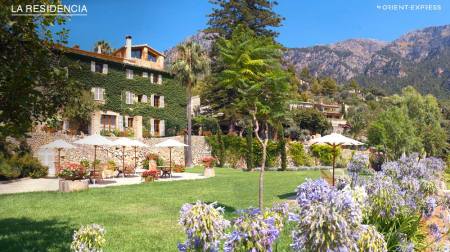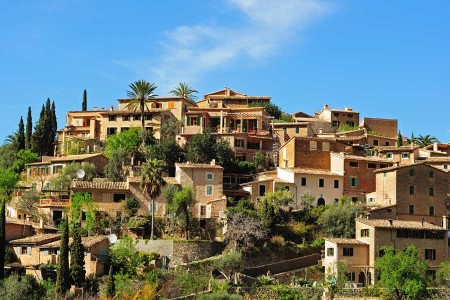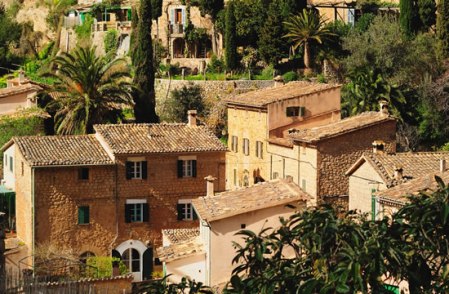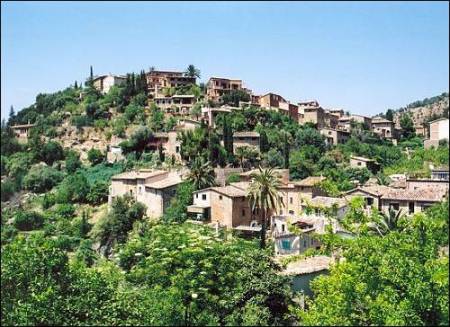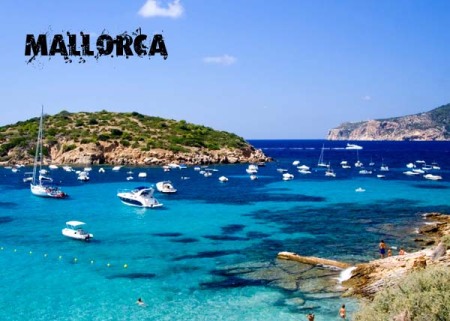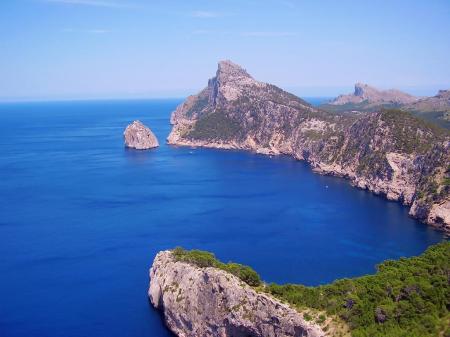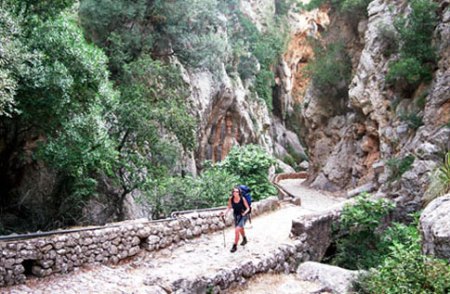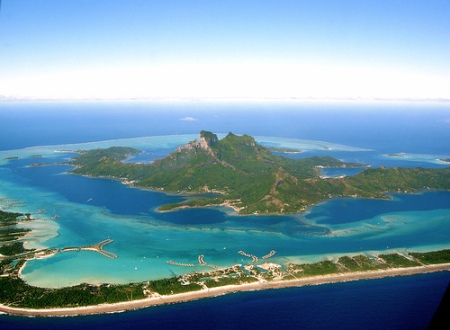Deya is a beautiful, old, quiet,
stone village perched on steep slopes, surrounded by land cultivated on
narrow terraces. An attractive church presides over the houses, which
are connected by narrow lanes. It was the home of the poet Robert Graves
and is still popular with artists and writers. It also has a small
expatriate population and is a favourite of more mature Europeans,
wanting the quiet life. Not much happens here and that’s the way they
like it. The village’s few amenities are situated along a ¼-mile stretch
of the main road running between Soller and Valldemossa.
Locality:
Deya is situated halfway along the
NW coast, 18½ mls N of Palma, 6¼ mls W of Soller and NE of Valldemossa.
It is 23½ mls from the airport. It is positioned on a vast, natural
amphitheatre in the mountainside and above the sea. Magnificent country
of intense blues and greens, with mountain peaks looming behind.
Deya is popular for quiet,
relaxation and appreciation of the scenery holidays. It tends to be
popular with predominantly middle-aged couples, with many British and
German visitors. Not suitable for those with walking difficulties, as
slopes and steps are unavoidable. Children will be hopelessly bored.
Accommodation consists of two upmarket hotels and one or two pensions and a limited selection of privately owned villa’s.
A small cove ½ mile downhill
provides the main beach in the area. However, tiny but nevertheless
appealing beaches can be found at Lluc Alcari and Son Marroig (2 and 3
mls respectively).
Shopping is limited to a couple of boutiques, some galleries for upmarket souvenirs and artists’ studios. One or two shops for basics.
Shopping is limited to a couple of boutiques, some galleries for upmarket souvenirs and artists’ studios. One or two shops for basics.
Daytime activities include: museum,
artists’ studios. Exhibition gallery in one hotel. By night everything
is failry quiet, though hotels arrange the occasional diversion.
There are a limited number of restaurants and bars, from tapas and pizza to a la carte in Deya.
Getting around is fairly easy with regular bus service along the Palma/Valldemossa/Deya/Soller/Puerto de Soller route. Car is practically essential to explore outlying areas.
Getting around is fairly easy with regular bus service along the Palma/Valldemossa/Deya/Soller/Puerto de Soller route. Car is practically essential to explore outlying areas.
Local excursions include: drive to
Valldemosa, with its monastery (briefly home of Chopin); Soller (market
on Saturday); Palma. Scenic mountain drive to Lluc Monastery.

